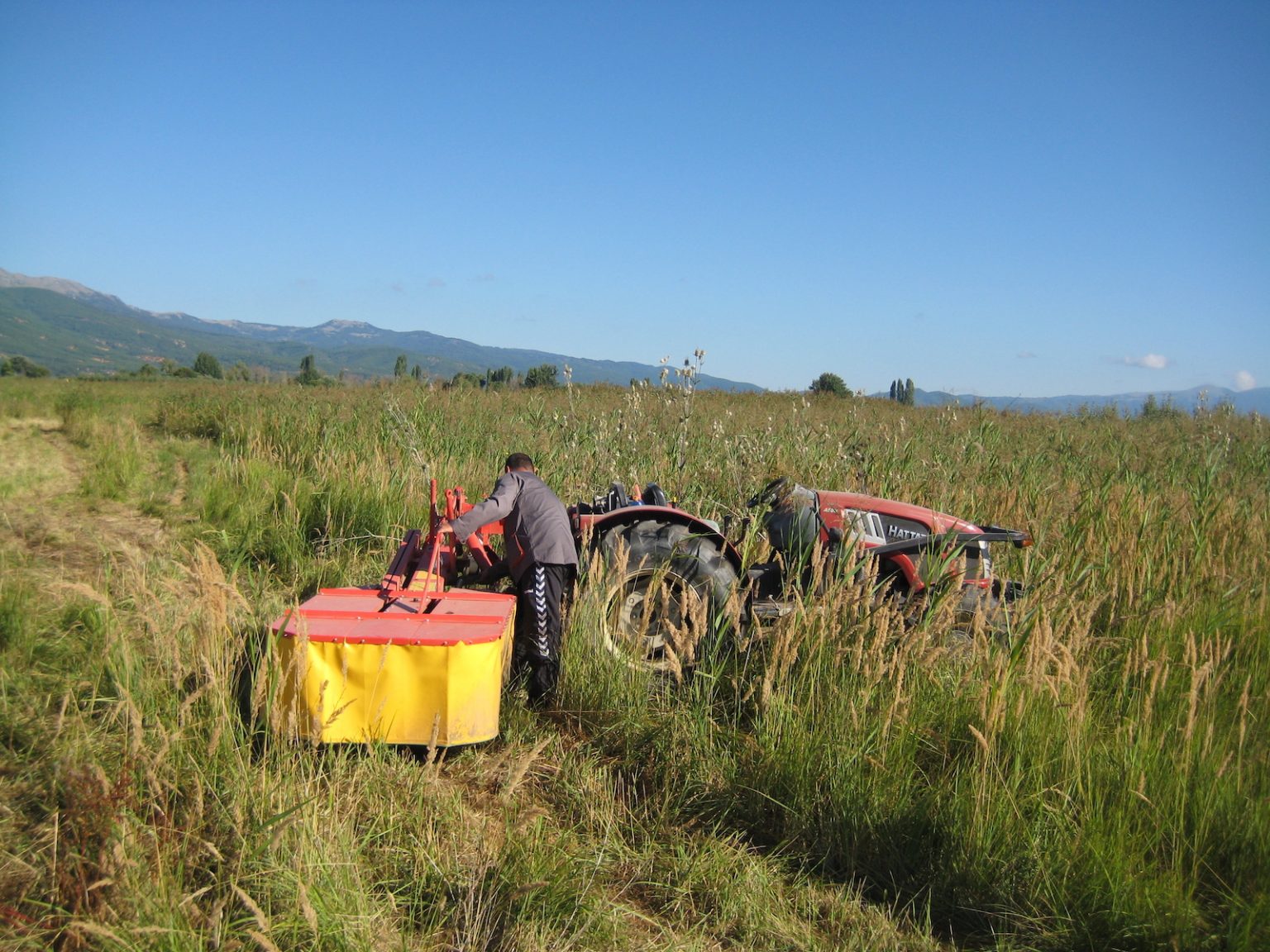The mapping of Prespa littoral habitats, conducted in 2018 resulted with scientifically sound recommendations on their management. According to the habitats map, priority habitats – Alluvial alder forests together with wet meadows were identified as a priority for restoration, i.e., management.
In 2019, MES team started with pilot management activities of wet meadows around Prespa Lake. First, it was determined their distribution along the Prespa shoreline with a total area of 547 ha. The habitat map revealed four different types of wet meadows in the Macedonian part of Prespa:

- Mediterranean tall humid herb grasslands of the Molinio-Holoschoenion
- Beds of large Carex spp.
- Calamagrostis epigejos communities
- Helleno-Moesian riverine and humid Trifolium meadows
In order to confirm the socio-economic, as well as the cultural significance of the wet meadows, private owners (of wet meadows) survey was conducted. Target groups were stockbreeders and owners of larger areas under meadows. The results showed that 44% mow their meadows, which satisfies the complete diet for their livestock, and 56% don’t, as they don’t have the necessity. Also, short-term biodiversity research was conducted, which revealed three new species of spiders for North Macedonia (Pisaura novicia, Berlandina cinerea and Trachelas minor, a representative of a spider family encountered for the first time, nationally, Trachelidae) and three new species of grasshoppers for Prespa, but also huge negative differences in the species diversity of the meadows exposed to agricultural practices in the region. The recommendations that emerged from the results obtained from the activities in 2019 gave several directions for improving the condition of this habitat. Among other things, a pilot project was proposed – stimulate summer mowing of wet meadows, remove the hay (biomass), and distribute it to local farmers to use.
In order to select the most suitable plot for management, a system of criteria was created:
- to be within the Ezerani Nature Park
- to be outside of the strict protection zone
- to be state-owned
- to be spatially distributed as a buffer zone between orchards and natural habitats in ENP
- to be larger than 2 hectares
- to be easily accessible
In the process of selection, MES was in constant communication with the Municipality of Resen. Various working meetings and field visits to the area were organized in order to finalize the selection. After the plot was selected, a local farmer was hired to process the land and bale the hay.

An area of 16.054m2 was mowed in August, 11.858 m2 consisting of the Calamagrostis epigejos community and 4.196m2 belonging to beds of large Carex spp. The mowed hay was collected into 350 bales that in collaboration with Municipality of Resen were distributed to local stockbreeders without financial compensation, which was another way to help the local community benefit from habitat restoration activities.

